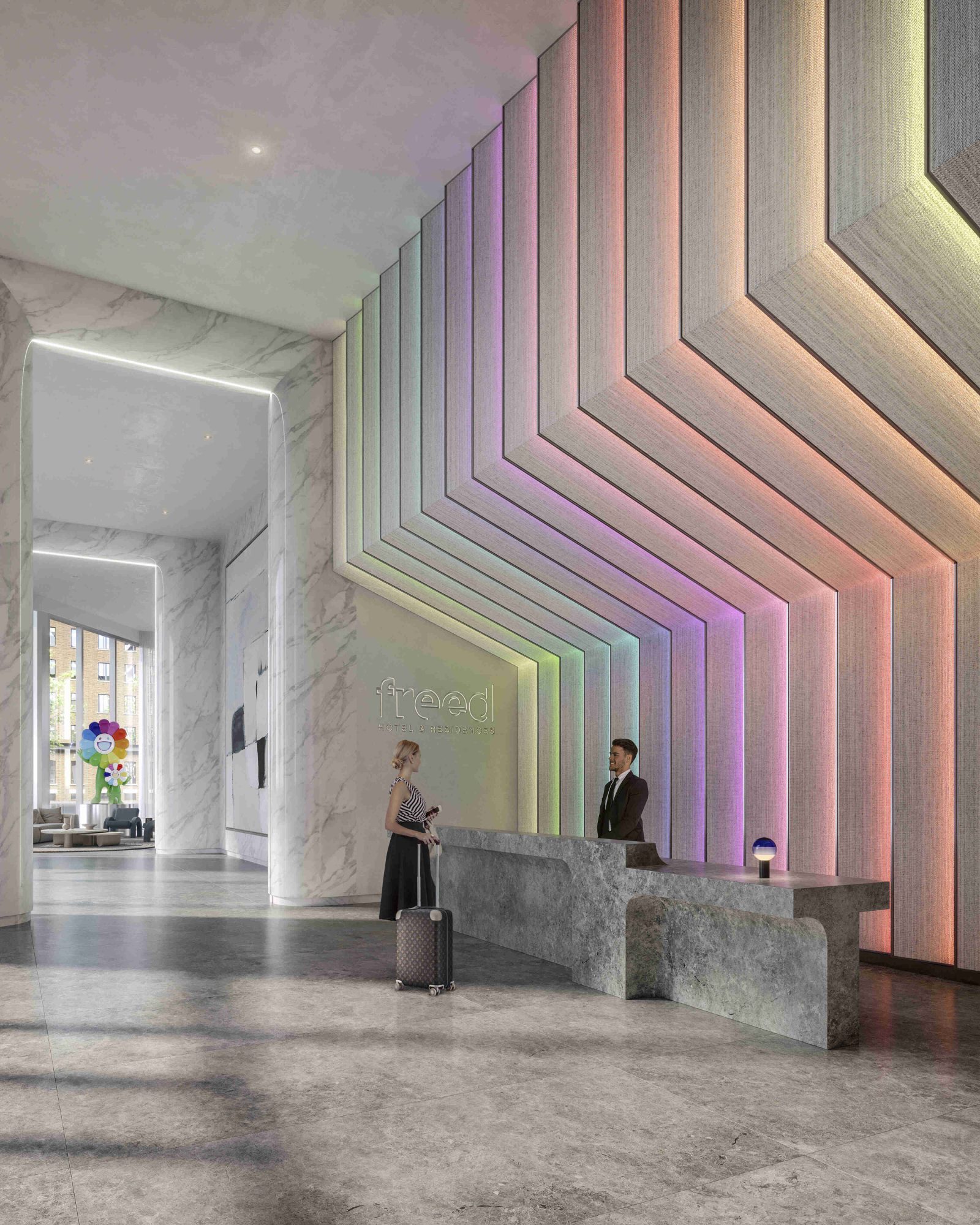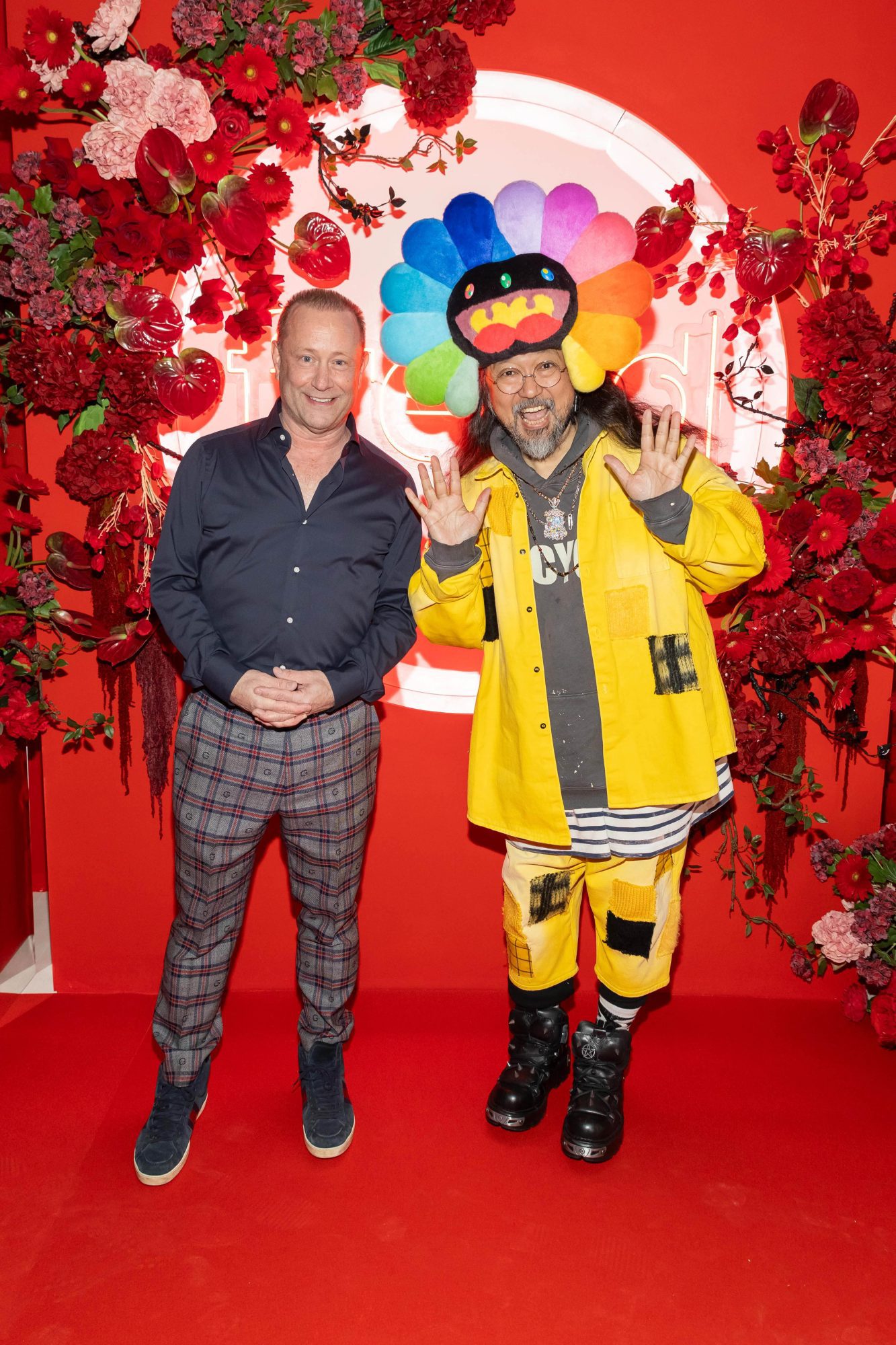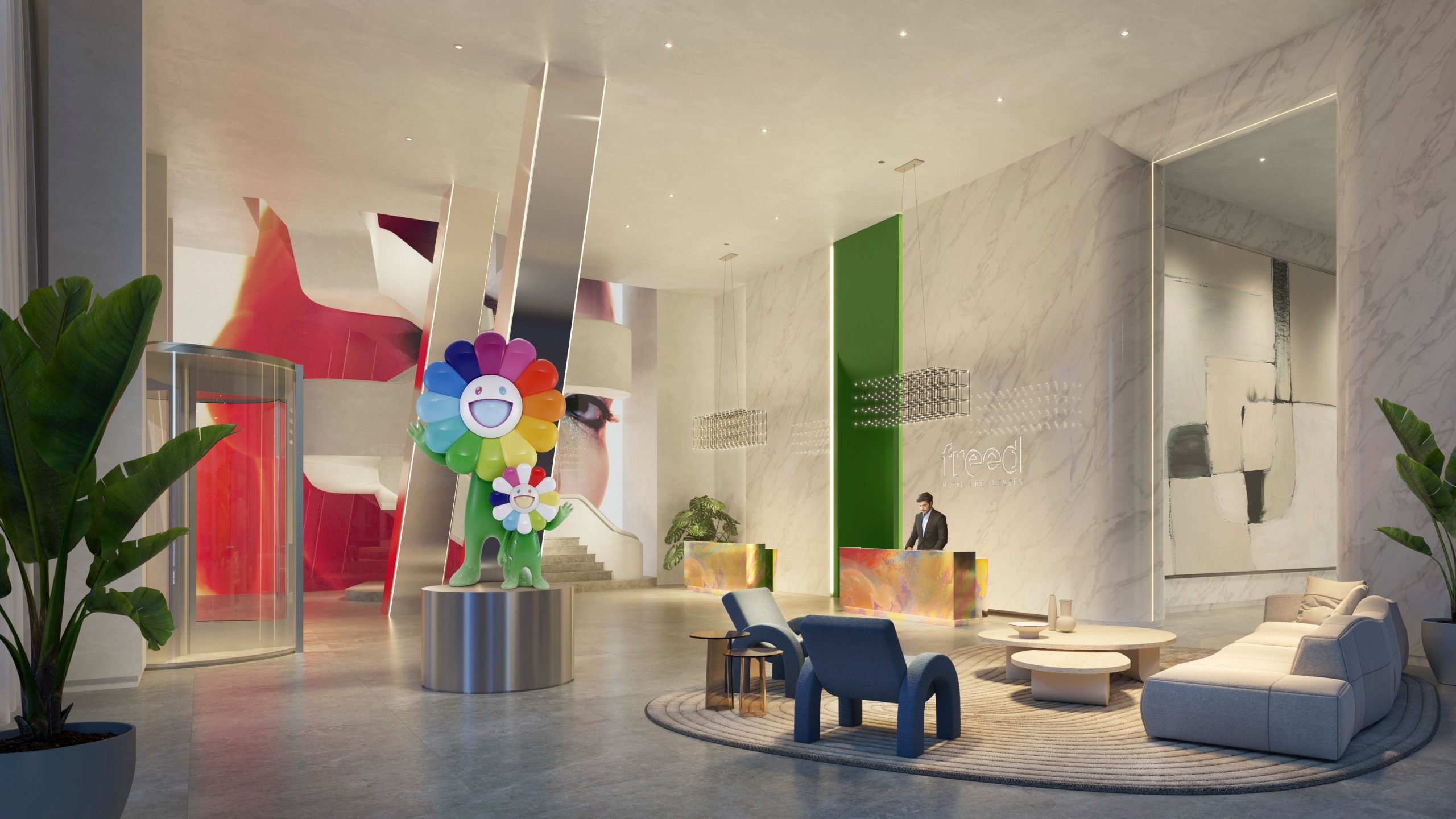When it comes to the evolution of cities, real estate plays a powerful role in shaping the cultural fabric of urban centres. Toronto stands as a prime example of how innovative real estate projects can redefine urban culture. At the forefront of this transformation is leading developer Peter Freed, whose latest endeavour, the Freed Hotel and Residences, marries luxury, art, and real estate in one 63-floor package.
Freed’s collaboration with cultural icons is an outlier amongst his contemporaries, bringing together visionaries from the realms of art, hospitality, and design to elevate his projects from buildings to community beacons. In his Art Shoppe Lofts and Condos, he enlisted the help of legendary fashion visionary, Karl Lagerfeld, and in Seventy5 Portland, globally renowned designer Philippe Starck was brought on board to lend his creative perspective. In the Freed Hotel and Residences, iconic Japanese artist Takashi Murakami’s vibrant artwork, ‘Together with the Flower Parent and Child,’ takes center stage in the lobby, fostering a sense of connection and dialogue within the community.
Beyond its physical attributes, Freed Hotel and Residences embodies a larger vision for Toronto—an inclusive, vibrant, and forward-thinking city where culture thrives and communities flourish. Freed’s willingness to challenge the status quo sets a new standard for real estate development, inspiring others to think boldly and creatively about the future of urban living.
In an exclusive interview, Freed chats with GLORY about working with Takashi Murakami, shaping Toronto’s skyline, and what excites him most about Toronto’s real estate future.


How does art act as a catalyst for community engagement and cohesion when it comes to real estate development?
Peter Freed: It’s always a topic of conversation. Art is a platform for connection. There aren’t many things that provide an opportunity for people to connect, debate, and feel. Art, in my opinion, is the most effective way to do that.
Something very unique about the projects that you launch has to do with your collaboration with other renowned artists, like Karl Lagerfeld and Philippe Starck. Why has that been an important part of your marketing strategy?
Peter Freed: I believe that architecture, design, art, and hospitality are all part of an overall experience, visually, literally, and physically. Working with inspirational artists that can provide an additional vibrancy to a building is consistent with what we love and look for. There are so many buildings in the world, and most are commodity-type buildings. They don’t have any impact on you; it’s just another building. We invest a big amount of energy to accomplish the opposite of that and impact the visitors and residents in our projects.
It’s so exciting that you’re working with Takashi Murakami. What drew you specifically to his work?
Peter Freed: I wanted to do something very special for this project by bringing the best of the best together. It’s on an iconic corner in this great city of ours. His art has always inspired me. It’s always given me good energy and I wanted to contribute something positive to the city. We were very fortunate that he was willing to participate in this project. It’s not something that he traditionally does.
After a large effort, we finally received confirmation that he was willing to work with us. We decided on this spectacular piece of art, called ‘Together with the Flower Parent and Child,’ that will be prominent in our lobby and a big part of that city corner. It’s so wonderful to see the joy that his artwork exudes, which will now be a permanent fixture in Toronto’s downtown.
RELATED: Takashi Murakami on His Vision for Art in the 21st Century and His Groundbreaking Debut in Toronto




What excites you the most about this project?
Peter Freed: Firstly, I believe it’s the best location that we’ve ever had as a development company. It’s a prominent skyscraper that is a combination of a hotel and residences. On top of the building, on the 63rd floor, we’re going to be creating the most incredible commercial space in Canada. The ceilings are going to almost be 80-feet tall in the top corner and the views are going to be world-class. Secondly, the team that we put together, from Smith + Gordon Gill for architecture to Chef Katsuya for the future restaurant, really brings together the best of the best in the world to celebrate Toronto.
How would you describe Toronto’s current real estate landscape and how do you envision the upcoming project contributing to the city’s overall development?
Peter Freed: The market has been slower than normal in the last year or two in Toronto. As everybody knows, the economy has gone through an adjustment period but people understand quality and there are always purchasers that are looking for something that’s different and better.
I anticipate the market to pick up soon so I think that this project is being launched at a perfect time. It’s a long-term project that will take five years to build and deliver. A lot can change every five years; there are many ups and downs. I feel like we’re leading the market right now with this offering. Despite the fact that the last 18 to 24 months have been slower than normal, it’s a strategic time to launch this iconic long-term project.
The real estate industry is ever-evolving. How do you stay ahead of trends?
Peter Freed: Great projects have long-term staying power; they’re timeless if designed and constructed in a certain way. If you try to be too trendy, by the time you finish building your project, it no longer will be.
Toronto is trending to be a 10-million strong city. I think we’re over seven million people now and transit is a huge issue. We’ve always tried to follow transit, and the core of the city is maturing. There aren’t too many locations like this left that haven’t already been developed. Increasingly, you’re going to be looking for unique offerings to differentiate yourself from the rest of the pack.


Toronto is going through a lot of change but there is still a lot of opportunity to mould the city’s culture. What does it mean for you to play a part in shaping the skyline?
Peter Freed: It’s a privilege to be able to contribute to the skyline in the city. Historically, most of the buildings that have been constructed in Toronto have unfortunately not stood out in a positive light. We have these predominant features of balconies and window wall-types of construction, so a lot of the buildings end up looking the same. We’ve made it a priority to ensure that this building will stand out and be different. We’ve put a lot of time, energy, and money towards trying to accomplish that.
Can you share any lessons or insights that you’ve gained from your past projects that have influenced your approach to future projects?
Peter Freed: We’ve always tried to do something different. I’m always cognizant of where you are when you walk out the front door. Are you across the street from a park? Are you close to transit? One of the incredible things about this property is that you’re perfectly straddled between the financial and entertainment districts. It’s all about location and then we back that up with design, hospitality, and lifestyle strategy. The property has to have a pulse of its own.
What excites you the most about the next 10 to 20 years ahead?
Peter Freed: What excites me the most is the continued evolution of the city and, hopefully, more infrastructure and growing cultures. There’s a huge need for infrastructure at a rapid pace. We’re finally hitting 300-metre heights in our buildings, and we’re bringing in talent from all over the world. There’s a development boom that’s happening in the city that some have compared to what happened in New York. In my opinion, Toronto is the best city in the world. Hopefully. it’ll continue to feel that way as it grows. I don’t want that to change.
This interview has been edited and condensed for clarity.















